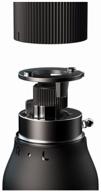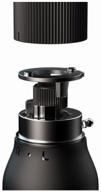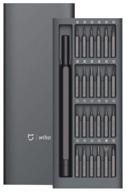
Review on Connector Alligator Indicator Motorcycle Extension by Bryan Turner

Just the first impression - Eleceanta Mini 5 battery charger with LEDs (charge controller?)
Based on only a few minutes of testing, but gave 5 stars because I didn't see any problems and don't want to falsify the results with a lower "mean " Star of the first rating (this one only). It can be connected to the battery first (the usual approach with such devices) or to the solar panel first. When first connected to the battery, 5 LEDs give a rough indication of the charge status. A badly drained battery (8Ah AGM, which accepts a charge but doesn't last long) sitting at 10.8V only illuminated the bottom (20%) LED, which soon started blinking. connected solar panel) and setting the voltage of this "battery" gave an idea of how the LEDs work, i.e. the number of LEDs lit in relation to the voltage of the battery. The LEDs light up one by one, the bottom ones are always on, so if #4 (80%) is on, then #1-#3.3.6 is -11.1 volt 1, and after a few seconds, flashes 11.1 volt 1, but is steady on first time (and tested the LEDs on all higher voltages) 11.5v 2, first time 11.96v 3, first time 12.4v 4, first time 12.88v 5, the first time around I don't think these voltages match really well with the expected state of charge of a 12V lead-acid battery at rest (no load) as they are for all but 100% LED #5 (which is itself for 100 % is too high) are too optimistic. Leaving aside 100%, which should be around 12.7 volts, they are more indicative of a battery that is currently under load. If used without independent verification, they can cause excessive battery drain and shorten battery life. Unfortunately, such a simple indicator (5 LEDs) is not enough for good battery monitoring and this device is not really designed for that. The leakage current (without a solar panel connected) when connected to a fully charged battery is approximately 3.3 mA (0.0033 A). , and the same when a completely dark (e.g. folded) solar panel is connected. A VERY SHORT charge test showed that the charge voltage was limited to 14.5 volts (or 14.55 volts with another meter, neither of which are accurately calibrated instruments, but probably within 0.1 volts). This is the effective end voltage of absorption. This is a compromise. Depending on the temperature, it can be 0.1 volts higher for a typical flooded lead-acid battery and maybe 0.1 to 0.2 volts lower for some AGM batteries like the Optima. Batteries that are larger or more heavily discharged at the beginning of the charging process have a slightly reduced voltage (14.35 volts). I've never seen much more than 3 amps momentarily right after plugging it in, but most batteries were already in pretty good shape. Obviously, the Elecaenta 120W solar panel is limited to around 7 amps in full sunlight, which is its approximate Isc value (short circuit current), so you will never see a charging current above that value. You cannot overcharge a battery with a capacity of about 25 Ah or more (at a maximum charging current of 25% C, where C = battery capacity in Ah). "Bulk" charging (when automatic chargers limit the charging current and let the voltage rise)? I haven't had enough time to determine this, but it's clearly safe for car and larger motorcycle batteries. The second question is how does the absorption charge end (later state of charge when the current has dropped and the charge is at a constant level). voltage)? A good automatic charger should drop to a floating voltage of around 13.6V, perhaps with some additional voltage control or ripple for long-term maintenance. Older chargers don't do this by running on time or prompting the operator to notice and turn off the charger when the current has dropped to the point that indicates a full charge (depending on battery size and age). I wasted no time. to test the behavior at the end of the loading process. I haven't found the manual yet (it didn't include a printed version), so I don't have the "official" version either. When charging, the top LED flashed on my fairly well charged test batteries. Does it stop flashing and the voltage drop to a "float" level as the charge current drops, indicating a full charge (and to what voltage?)? I do not know yet. My advice: keep an eye on it and check it with a voltmeter from time to time when you first start using it and if it never drops to 14.5V you know to stop charging yourself. Even without a meter, the LED charge level indicators above can be helpful. When you think the battery is charged, disconnect it, briefly apply a small load to remove the "surface charge" (this lasts for several hours without a load), and just reconnect the charger with no solar panel connected. If you get 5 LEDs it's fully charged, and if it's 4 LEDs it may be, but it's probably at least 70% charged (I don't 100% agree with the LED charge level labels). If you stop charging and wait a few minutes to do this test without charging the battery, you will get another clue. It's best to have a cheap voltmeter handy, at least until you're sure how the device completes its charge cycle. At the very least, it's a big improvement over charging 12V batteries directly with a "12V" panel without a charge controller (this device is a small solar charge controller) where you rely on the size of the battery to charge to absorb electricity. full panel current and user supervision to disconnect the battery and prevent damage to the battery before it overvoltages while the end of charge is being absorbed (thus either damaging the battery or receiving less than full charge). Note that in a worst case scenario (which may not be the case as it hasn't been tested) this charger allows for a 100% charge during the absorption phase, leaving the user to just switch off when complete. Also, a decently sized battery that starts low is unlikely to be charged on a sunny day with this "charger" and solar panel combo. Verdict: It appears to be a small, functional lead-acid charging accessory, small enough to fit in an Elecaenta solar panel storage bag, at least usable with batteries of various sizes, perhaps with some user supervision. Probably worth the price and "offer" if it's offered as a free add-on with the purchase of the 120w Elecaenta folding panel (when I bought my second panel). Other owners please share your experiences. You have fully charged several batteries!
- Inverter
- Functionality
New products
Comments (0)
Top products in 🔋 Jump Starters, Battery Chargers & Portable Power
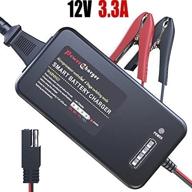
Efficient Charging With LST 7 Stages 5A Battery Charger - 3.3A 12V For Ultimate Performance

35 Review

Mroinge Automatic 6V/12V Trickle Charger For Vehicles, Motorcycles, Boats And More - Maintain Your Batteries With Ease!

29 Review
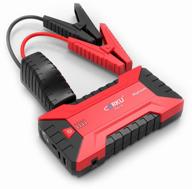
CARKU Pro-10 black/red

91 Review

Xiaomi 70mai Jump Starter Midrive PS01

120 Review



